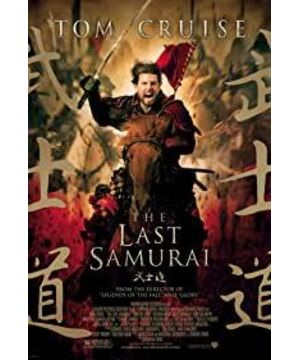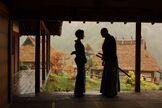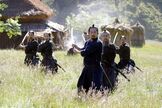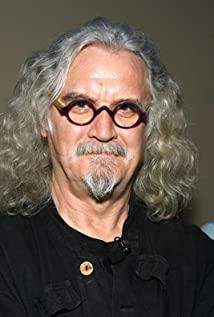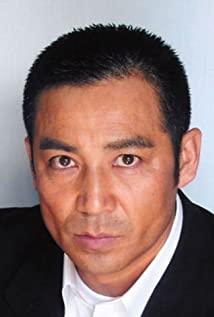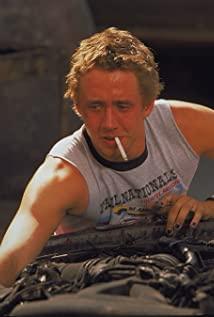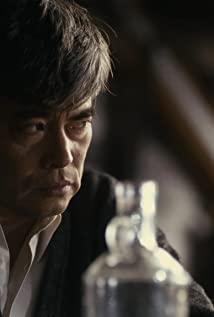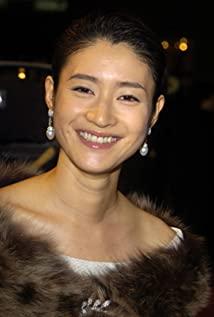Let's start with the historical background of the movie Last Samarui. It is generally believed that the archetype of General Seimoto is Takamori Saigo, one of the three heroes of the Meiji Restoration, and the archetype of the villain Omura is the other of the three heroes of the Meiji Restoration--Rittsu Okubo.
Saigo Takamori and Okubo Toshitsu of the "Three Great Restorations" were fellows of the Satsuma clan, and they were both lower-class samurai who struggled on their own. They were both loyal and reformists who fell to the shogunate and restored the emperor's power, but their personalities and ways of doing things led to a difference in their life paths:
Takamori Nishigo was educated as a traditional and strict samurai since childhood, and his character was both martial and extremely loyal, filial, benevolent and righteous. After the death of the first lord Shimazu Qibin he served, Xixiang planned to commit suicide and died. Later, after the monk Yuezhao tried to persuade him, he gave up suicidal thoughts and determined to carry out the reform of the shogunate. In the process of King Qin's fall, Xixiang was expelled. He felt that King Qin's reform was over. He embraced Monk Yuezhao and committed suicide by jumping into the river. Fortunately, he was rescued. Later, he returned to the core of power with the help of Okubo Toshitsu. In the reform and reform, the interests of the traditional warriors were infringed, and the warriors of the Satsuma clan, where Takamori Saigo was located, rebelled, which opened the prelude to the Southwest War. Although Takamori Saigo was not in the Satsuma clan and could have been separated from the relationship, he sighed after hearing the news. He was still trapped by righteousness. He returned to the Satsuma clan to rule the nobles and marched northward in the name of "interrogating the government." In the end, the government army defeated the Satsuma army, and Nishigo Takamori had his head cut off by his subordinates while he was wounded. Japan's last civil war ended.
On the other hand, Okubo Toshitsu, even though he was both a samurai from the Satsuma clan, and the same king of the fall, he is exquisite, iron-blooded and unrelenting. In his youth, Toshitsu Okubo and his fellow villager Nishigo Takamori established a political group "Jing Faith Group", hoping to make political achievements. In contrast to Saigo’s character, when the lord Shimazu Qibin died of illness and Saigo was about to commit suicide, Okubo Toshitsu determined to work hard on the new powerful figure (Hiamitsu) to realize his ambitions. He found that Hisamitsu loved to play Go, so he worked hard to practice chess in order to communicate. Hearing that Jiu Guang wanted to read "Gu Shi Zhuan", he managed to obtain as many as 28 copies of "Gu Shi Zhuan" to lend to Jiu Guang, and took the opportunity to include a note in the book to let Jiu Guang understand his views on the situation. His efforts paid off, and Hisamitsu finally gradually alienated the conservatives and began to reuse Okubo Toshimoto, and the "Jing Loyalty Group" also gained legal status. In the process of defeating King Qin, Okubo Toshitoshi stalked, separated and merged with different political factions, and gradually controlled the political affairs through alliances, coups and other means. In addition, he returned to Saigo Takamori, who had not committed suicide, and dealt with his own internal affairs to cooperate with Saigo. Through the Boshin War, Saigo commanded the army to destroy the shogunate and completely returned to the era of Emperor Meiji's rule. During the reign of Emperor Meiji, Okubo Toshiro (opposing the conquest of Korea) and Takamori Saigo (advocating the conquest of Korea) had a disagreement. In the end, Okubo Toshigo won the political struggle again, and Ryuomo Saigo was forced to resign.
Introduced the historical background of the pros and cons of the protagonist, and returned to the topic, that is, the feelings of "The Last Samurai". Movies always shape the pros and cons, and enrich the script in contrast. General Shengyuan (Xixiang) did not abandon the traditional warrior spirit. When the tradition fell behind, he would rather die for martyrdom and defend the dignity of the tradition with his life, which is worthy of respect. What everyone needs to know is that Okubo, portrayed as a cowardly and changeable Omura, the true ending of its prototype Okubo Toshitsu is like this: [After Sanyoshi left, Okubo went to the Taizheng official (corresponding to the State Council) to work and took a carriage to Kojicho Shimizu Valley. Okubo also used the time to read the documents in the carriage. Unexpectedly, at around 8 o'clock, he was attacked by six members of the Korean Party including Ichiro Shimada in Ishikawa Prefecture. Okubo sternly reprimanded even though he was handed a knife. He calmly wrapped the papers on his lap in a silk scarf, and soon fell forward and died. He was 49 years old. 】
Omura (Okubo Toshitsu) is also extremely loyal to traditional imperial power. In an era when change is inevitable, in order to restore imperial power and revitalize Japan, he resists personal pain and throws himself into the involuntary grievances and hatreds. Because of Dajiu's control of power, Xixiang, who had only known his martyrdom several times, had the opportunity to be recalled to the center of power; with the long-term logistical support, Xixiang had the merits of commanding the three armies to suppress the shogunate. As a traditional samurai, the difficulty and pain that Oku has endured is even greater. Only those who have experienced can realize that living is the greatest courage.
There is more and more a value that should be criticized. Those who live for their ideals and die after achieving their ideals are the happiest people in the world.
PS Ken Watanabe is so handsome.
View more about The Last Samurai reviews


